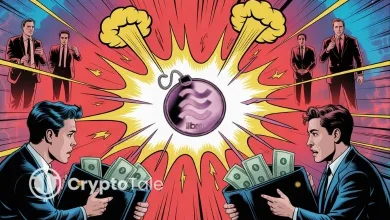The Blockchain Bulletin May 23: Bitcoin Breaks $111K as Crypto Markets Reignite

Hey folks! Hello and welcome to the latest edition of the Blockchain Bulletin, where we untangle and report some of the most interesting insights that have been in the limelight in the past 24 hours. In a move that has electrified markets and rekindled global crypto enthusiasm, Bitcoin surged to an unprecedented all-time high of $111,900 on May 22, coinciding—perhaps poetically—with the fifteenth anniversary of Bitcoin Pizza Day.
This symbolic day marks the first recorded real-world use of Bitcoin, when programmer Laszlo Hanyecz paid 10,000 BTC for two large pizzas back in 2010, an amount then worth just $41. Today, those same coins would be valued at over $1.1 billion, a stunning testament to Bitcoin’s journey from a fringe experiment to a globally recognized asset. The price leap, up 3.3% on May 22nd, has once again placed Bitcoin in uncharted territory, highlighting renewed investor confidence and market momentum.
While Bitcoin celebrates historic highs, a contrasting development has emerged in Singapore, where cryptocurrency awareness has reached an all-time peak of 94%, but ownership has dropped sharply—from 40% in 2024 to 29% in 2025, according to a recent survey by Independent Reserve. Despite this decline, sentiment remains bullish: 53% of existing holders intend to expand their positions in the coming year, and 17% of non-holders are planning their entry into the market. Independent Reserve CEO Lasanka Perera attributes this shift to a strategic “recalibration” rather than a retreat, noting that Singaporean investors, seasoned by market volatility, are now gravitating toward established digital assets.
Meanwhile, in Washington, digital finance policy continues to evolve as the GENIUS Act—a comprehensive bill aimed at regulating stablecoins—gathers momentum. Backed by a bipartisan vote that included fifteen Democrats, the legislation is poised to pass the Senate. President Trump’s top AI and crypto advisor, David Sacks, who also serves as White House “AI & Crypto Czar,” emphasized that the U.S. holds over $200 billion in stablecoins yet operates in a regulatory vacuum. Sacks argues that this bill could trigger “trillions in demand for U.S. Treasuries” and strengthen the dollar’s global role by treating stablecoins as next-generation payment infrastructure.
On the investment frontier, VanEck has announced the launch of its PurposeBuilt Fund, set to go live in June 2025, which will target Avalanche-native blockchain ventures, particularly those engaged in tokenized real-world assets (RWAs). Aimed at accredited investors, the fund seeks to support sustainable Web3 innovation across industries, including AI, payments, and gaming. Capital not deployed directly will circulate within the Avalanche ecosystem through yield-bearing RWA instruments, ensuring liquidity and adoption. This initiative follows VanEck’s continued leadership in digital asset investment, notably through its Digital Assets Alpha Fund, currently managing over $100 million.
Elsewhere in the decentralized world, the XRP Ledger is expanding its stablecoin offerings with the launch of USDB, issued by Brazil’s Braza Group, and EURØP, a MiCA-compliant euro-backed token from Europe. Announced by Schuman Financial, a licensed EMT issuer under France’s ACPR, this move enhances XRPL’s growing role in regionalized tokenized finance, particularly across Europe and Latin America.
However, not all developments were positive. The Cetus Protocol, a major DEX on the Sui blockchain, suffered a catastrophic collapse as over $200 million was drained from its liquidity pools. Trading ceased, USDC on Sui depegged, and token values on the platform plummeted by over 90%, prompting fears of a massive exploit. Liquidity across major pairings fell to as low as $143,000, triggering a broader discussion around DeFi security and the systemic risks of decentralized infrastructure.
Related: Moo Deng Price Prediction 2025-35: Will It Hit $30 by 2035?
Making new waves in the sphere of NFTs, Real Vision CEO Raoul Pal put forth such a notion that, calling it the “single best long-term store of wealth,” with an almost unprecedented interaction between art and technology. While many laughed off the comment as an exaggeration, there were other lenses through which it was rather seen as a renewed plea to rethink value creation and value preservation in this digitizing economy.
The world of digital assets keeps moving rapidly, bringing high valuations, careful hope, and always-present weaknesses, reflecting changes, adaptability, and strength.





